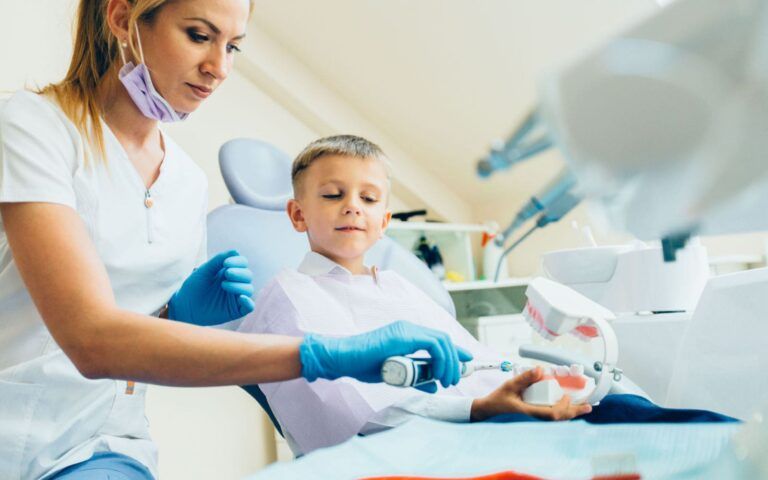When Is Early Orthodontic Treatment Necessary?

Sometimes, some children need early orthodontic treatment to ensure that their permanent teeth grow correctly. Treating potential orthodontic issues can reduce crowded teeth, crooked teeth, and gaps. Most children can be seen by an orthodontist as early as seven. While this isn’t necessary for all children, a parent might notice something that concerns them.
The Importance of Early Orthodontic Treatment
Orthodontic treatment (Phase II) is something most parents are familiar with. Phase II ensures that children don’t have cosmetic or oral health concerns due to the alignment of their teeth. But early treatment (Phase I) is also essential. How do you know what these treatments are? And when is it time to schedule an appointment with your child’s orthodontist to correct potential issues?
Phase I of orthodontic treatment is designed to help children with primary teeth. If the primary teeth are cared for correctly, the growth of permanent teeth is maintained. Phase I of orthodontic treatment has many options available to correct these issues, and the option offered to you depends on your child’s issue. Palatal expanders, partial braces, and retainers are the most common options. The goal in this phase of treatment is to address potential issues with the jaw and alignment before permanent teeth emerge.
Orthodontic treatments are recommended if your dentist or orthodontist notices an issue with your child’s jaw or teeth. The most common concerns that are checked for are:
- Malocclusion – Malocclusion happens when your child’s teeth are misaligned.
- Bite complications – Complications in alignment when your child’s mouth is closed can lead to discomfort and pain in the jaw muscles.
- Narrow jaw – When your child’s upper jaw is narrower than their lower jaw, it can lead to pain in the skeleton and cause discomfort.
- Protruding teeth – Protruding teeth are commonly referred to as “buckteeth” and can lead to more than just pain in the mouth. Protruding teeth can also lead to issues with self-confidence.
Early orthodontic treatment can reduce the necessity for metal braces or clear aligners. Think of early treatment as a head starts for phase II. Not all children require early treatments. If your child doesn’t have noticeable concerns with the alignment of their jaw or teeth, they may need to wait until phase II. The best way to determine if your child needs early orthodontic treatments is to visit your orthodontist. Your orthodontist can order X-rays and conduct examinations to determine if your child’s teeth or jaw are affected.
When Should my Child Visit the Orthodontist for Early Treatment?
Six or seven years old is recommended for a child’s first orthodontist visit. Even if many children don’t need treatment right away, an early visit can provide a better idea of what might be needed. Your orthodontist will also know if your child needs early orthodontic treatment. Your orthodontist can order the necessary exams and X-rays to ensure your child’s teeth are aligned correctly. Not only can they ensure proper alignment, but they can also ensure there aren’t any issues with your child’s skeletal structure or jaw formation.

Recent Comments